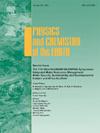Spatial assessment of snow cover patterns in the Sutlej River Basin using machine learning approaches and remote sensing data
IF 3
3区 地球科学
Q2 GEOSCIENCES, MULTIDISCIPLINARY
引用次数: 0
Abstract
Snow cover information plays a significant role in the hydrology and climate of Himalayan river basins, making it an essential parameter for understanding seasonal flow variations in these regions. This study investigates the spatial variation of snow cover concerning elevation, slope, and aspect ratio across the Sutlej River Basin (SRB) over three seasons, monsoon, winter, and summer, from 2013 to 2021. The study was conducted on the Google Earth Engine (GEE) platform, using two machine–learning algorithms, Random Forest (RF) and Support Vector Machine (SVM), to classify the Landsat satellite data. The study results reveal that the Random Forest classification consistently demonstrated better performance across all three seasons, showing higher overall accuracy and Kappa coefficient values. A decadal increasing trend in Snow Cover Area (SCA) was observed throughout the Sutlej River Basin (SRB). Furthermore, topographic parameters such as elevation, slope, and aspect significantly influenced the spatial distribution of snow cover, showing patterns that contrast with broader climate trends. Specifically, higher elevations particularly those above 4500 m consistently retained substantial snow cover across all seasons. Slopes between 30° and 45°, classified as intermediate gradients, provided an optimal balance between steepness and flatness, promoting maximum snow retention. Regarding aspect, northern and northeastern-facing slopes showed the highest snow accumulation due to reduced solar radiation, which aids in preserving snow during warmer periods. Further, the results highlight the influence of climate variability, with a declining trend in summer snow cover and an increasing trend in monsoon snow cover observed over the past three years (2019–2021).
基于机器学习方法和遥感数据的萨特莱伊河流域积雪格局空间评价
积雪信息在喜马拉雅河流流域的水文和气候中起着重要的作用,是了解这些地区季节性流量变化的重要参数。研究了2013 - 2021年苏特莱季河流域(SRB) 3个季节(季风、冬季和夏季)积雪高程、坡度和纵横比的空间变化特征。该研究在谷歌地球引擎(GEE)平台上进行,使用随机森林(RF)和支持向量机(SVM)两种机器学习算法对Landsat卫星数据进行分类。研究结果表明,随机森林分类方法在三个季节均表现出较好的总体精度和Kappa系数值。整个萨特莱伊河流域的积雪面积(SCA)呈年代际增加趋势。此外,高程、坡度和坡向等地形参数对积雪的空间分布有显著影响,呈现出与更广泛的气候趋势相反的格局。具体来说,海拔较高的地区,特别是海拔4500米以上的地区,在所有季节都保持着大量的积雪。30°和45°之间的坡度被归类为中间坡度,在陡度和平坦度之间提供了最佳平衡,促进了最大程度的雪潴留。在坡面方面,由于太阳辐射减少,北坡和东北坡的积雪量最大,这有助于在温暖时期保存积雪。此外,结果强调了气候变率的影响,过去三年(2019-2021年)观测到夏季积雪呈下降趋势,季风积雪呈增加趋势。
本文章由计算机程序翻译,如有差异,请以英文原文为准。
求助全文
约1分钟内获得全文
求助全文
来源期刊

Physics and Chemistry of the Earth
地学-地球科学综合
CiteScore
5.40
自引率
2.70%
发文量
176
审稿时长
31.6 weeks
期刊介绍:
Physics and Chemistry of the Earth is an international interdisciplinary journal for the rapid publication of collections of refereed communications in separate thematic issues, either stemming from scientific meetings, or, especially compiled for the occasion. There is no restriction on the length of articles published in the journal. Physics and Chemistry of the Earth incorporates the separate Parts A, B and C which existed until the end of 2001.
Please note: the Editors are unable to consider submissions that are not invited or linked to a thematic issue. Please do not submit unsolicited papers.
The journal covers the following subject areas:
-Solid Earth and Geodesy:
(geology, geochemistry, tectonophysics, seismology, volcanology, palaeomagnetism and rock magnetism, electromagnetism and potential fields, marine and environmental geosciences as well as geodesy).
-Hydrology, Oceans and Atmosphere:
(hydrology and water resources research, engineering and management, oceanography and oceanic chemistry, shelf, sea, lake and river sciences, meteorology and atmospheric sciences incl. chemistry as well as climatology and glaciology).
-Solar-Terrestrial and Planetary Science:
(solar, heliospheric and solar-planetary sciences, geology, geophysics and atmospheric sciences of planets, satellites and small bodies as well as cosmochemistry and exobiology).
 求助内容:
求助内容: 应助结果提醒方式:
应助结果提醒方式:


